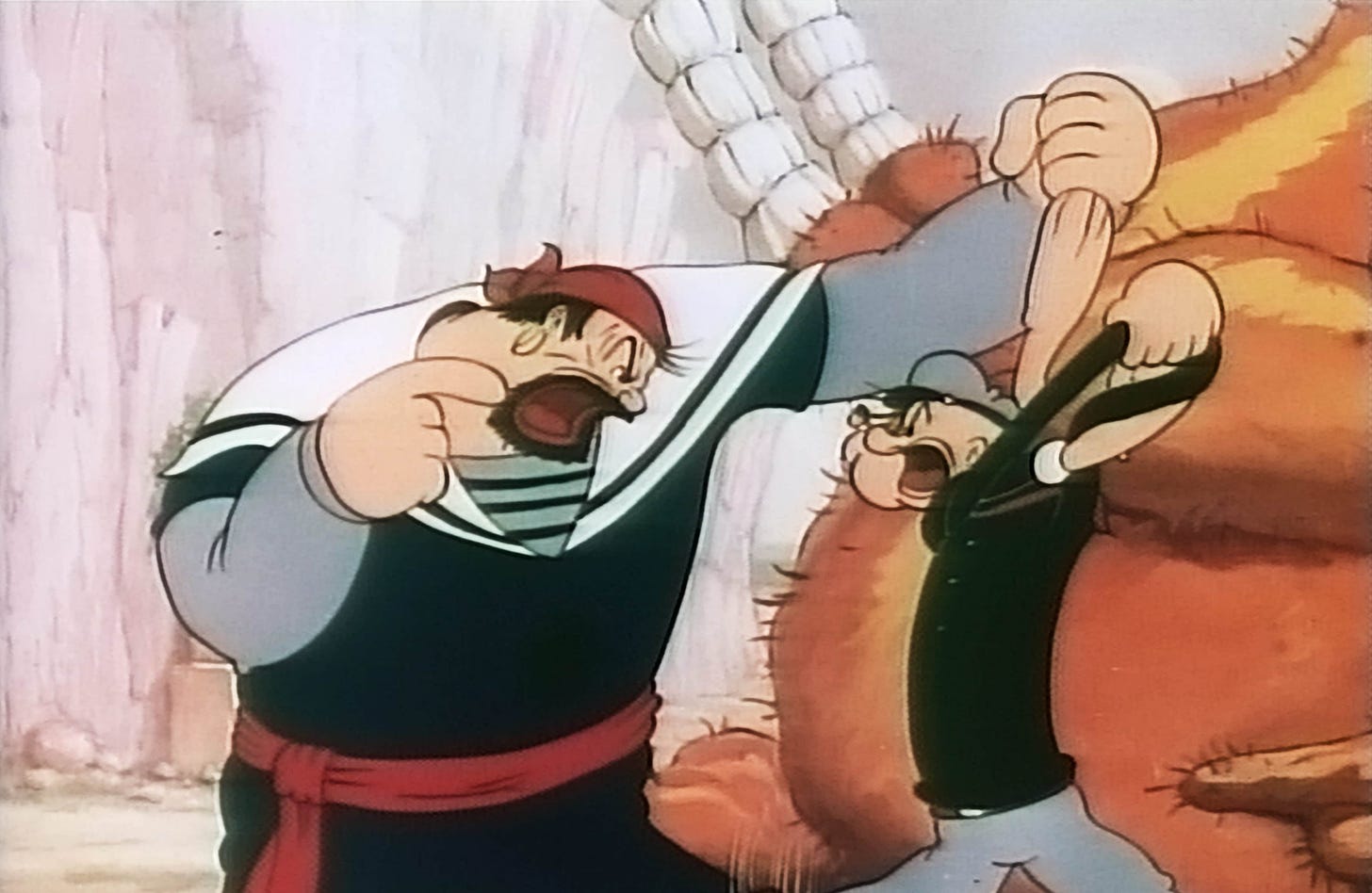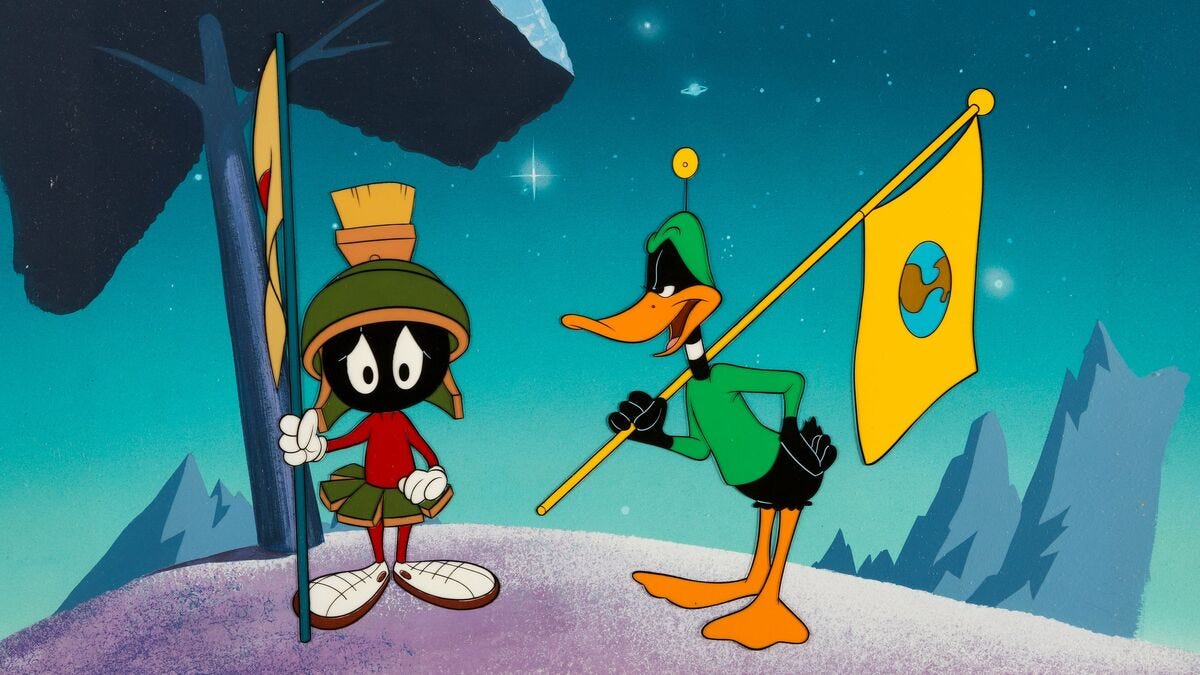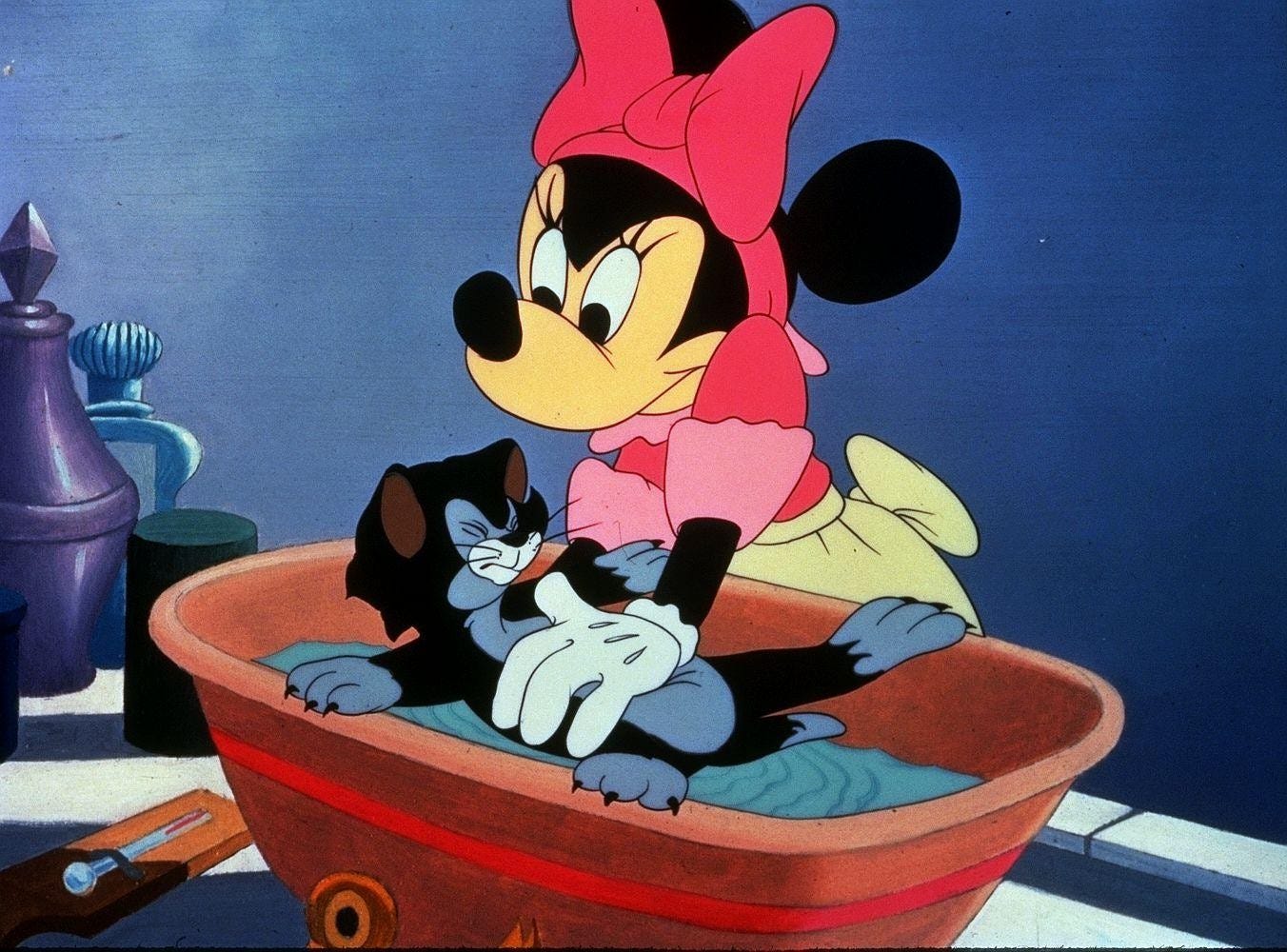The Streaming Era’s Classic Animation Problem (and Why It Looks Like Only Disney Is Trying to Solve It)
Technology has the potential to put swathes of golden age cartoons at our fingertips. So why is it mostly disappearing instead?
After my family moved from a condo to a house with a backyard a few years ago, our first purchases included a digital projector and an inflatable screen. It’s been great: in the warm months, we make popcorn, set up some lawn chairs, and watch movies under the stars. I usually take the opportunity to do a bit of programming, playing appropriate trailers and shorts before the feature. (My kid still talks about how ridiculous the live-action film of The Flintstones looks after I played the trailer alongside a bunch of other Summer of ’93 movies before Speed.) This past weekend, we watched Star Trek Beyond as the second half of a double feature with The Nightmare Before Christmas, so I decided to play Chuck Jones’ classic 1953 Merrie Melodies short “Duck Dodgers in the 24 1/2th Century.” Naturally, I went to Max, the hub of all things produced by Warner Bros. It was nowhere to be found.
I knew that Max, then HBO Max, had pulled a bunch of Looney Tunes and Merrie Melodies shorts from the service at the beginning of the year, but I didn’t know how many or which. I just assumed that “Duck Dodgers,” one of a handful of shorts invariably mentioned as among the finest produced by Warner Bros. in its animation golden age, couldn’t be one of them. I was wrong. It’s among the 256 shorts removed from the service in a purge of every such short released between 1950 and 2004. Also pulled: “Duck Amuck,” “One Froggy Evening,” “What’s Opera, Doc?,” and a bunch of others even casual fans know by name.
As a Cartoon Brew piece published in the purge’s wake points out, it’s part of a larger issue. As each streaming service moves in the direction of becoming the home for everything their parent company owns, you should theoretically be able to watch Terrytoons on Paramount+, Walter Lantz’s Woody Woodpecker and Chilly Willy shorts on Peacock, MGM’s classic cartoons (including Tex Avery’s inventive Droopy series) on Max, and so on. But you can’t.* That some of this material can be found on YouTube is a blessing, but it’s also the streaming equivalent of ceding preservation duties to the guy at the comic book convention selling bootleg DVDs alongside The Star Wars Holiday Special and the three-hour version of Spinal Tap.**
It’s a sorry situation, especially since HBO Max premiered with a generous selection of Looney Tunes shorts arranged in “seasons” that provided some sort of order. The removal of half that initial selection, despite the company currently known as Warner Bros. Discovery owning the material, seems to be the result of one of those intracompany deals that makes sense on spreadsheets and PowerPoint presentations but looks like chaos at best and a rip-off at worst to the shortchanged consumers who are suddenly getting less than they paid for. That the rebranded Max lost 1.8 million subscribers in the second quarter of 2023 alone probably can’t be directly attributed to the removal of “Lumber Jerks” and “Putty Tat Trouble,” but the Looney Tunes purge is symptomatic of a larger issue.

In some respects, it’s not a new issue. The golden age of animated shorts—for our purposes, let’s bookend it with “Steamboat Willie” in 1928 and any of the sad Looney Tunes entries from the early ’60s made after animated shorts had become unprofitable—enjoyed two lives. The first was in theaters, when cartoons regularly ran as part of a package of shorts, serials, and newsreels ahead of the features. The second was on television, where several subsequent generations encountered them on Saturday mornings or as part of the in-between spaces of local stations’ and cable network’s programming. (TBS, for instance, used to run hours of cartoons alongside Our Gang shorts and other pieces of olde time movie miscellany and both Disney’s major network programs and cable channel kept its back catalog in circulation.)
But classic cartoon shorts have struggled to find a third life in the years since the heyday of broadcast television. In the ’90s and ’00s, The Disney Channel became more about its current programming than the company’s history. Cable found other ways to fill its schedule. Even the Cartoon Network’s focus turned to its original programming. Simultaneously, the introduction of DVDs and, later, Blu-rays were a boon to aficionados via sets collecting hours of cartoons accompanied by introductions, commentary tracks, and other special features. I bought all of them: the Looney Tunes Gold and Platinum collections, the Disney Treasures sets, collections of Popeye and Droopy shorts and so on. (Most were made with the input of critic Leonard Maltin, whose scholarship and continued enthusiasm have been invaluable for animation fans.) That’s great for me and other members of the dying breed who’ve held onto and continued to buy physical media, but it doesn’t really help the rest of the world or help create a new generation of fans.
So when there are positive signs, it’s worth pointing them out. Without much fanfare, Disney has been dropping remastered versions of some of their classic shorts on Disney+, where they’ve joined the selection of shorts that’s been growing steadily since the service’s launch. When the last batch appears on October 8th, a total of 27 classic cartoons will have been added to the service. Given that, by Disney’s accounting, the studio has produced over 500 shorts, that's not a lot, but it’s not insignificant, either. The first batch, which arrived in July, doubles as a compact history of Disney’s animated shorts. It includes the delightful non-narrative (and unabashedly macabre) 1929 release “The Skeleton Dance,” the gentle funny animal humor of 1946’s “Bath Day” (starring Minnie Mouse’s cat Figaro, a character who never captured the public imagination quite like Mickey’s dog), and the suburban dad slapstick of “Aquamania,” a 1961 short in which Goofy develops an interest in boating.
It’s a curious situation: Much of Disney and Warner Bros.’s identities are built atop the iconic characters who starred in shorts that most people don’t watch anymore, often because they can’t watch them. But revisiting these cartoons proves they’re as vital and fun as ever. And, in other respects, the streaming era has been good both for animated shorts and famous characters. Pixar’s SparkShorts have provided a spotlight for up-and-coming animators. Looney Tunes Cartoons offered new cartoons starring Bugs, Daffy and the others in the style of the original shorts. (Its six-season run, overseen by Peter Browngardt, ended this year. All six seasons are still available on Max, at least for now), Similarly, since 2013, Paul Rudish has shepherded a series of winning Mickey Mouse shorts. Collectively they prove there’s plenty of life left in the animated short form and the characters who popularized it—and who constructed animation’s foundation in the process. It’s a foundation that doesn’t have to remain unseen and underground, especially in an era of push button convenience. Too bad the current state of streaming makes that easy to forget.
———
* And that list doesn’t even touch on animation houses like UPA, Iwerks Studios and other important-if-second-tier studios.
** Also on YouTube: a 50-second clip from “Duck Dodgers” excerpted to illustrate that the giant eye featured in one scene provides proof that the Freemasons have taken over Hollywood






At one point, me wanted to show kids Bugs Bunny, and thank Keebler me decided to seach on own first, because one of those off-brand streaming services you only use as last resort — Tubi? Glorbo? Squirtle? — had old Looney Tunes shorts. Me not recognized titles, and me very quickly found out why.
Me knew there were some moderately racist Looney Tunes that not have aged well and WB has issued along with disclaimer. What me discovered is that there are also jawdroppingly racist Looney Tunes shorts that WB has rightfully buried. Me got about one minute into one where Bugs spars with character who was clearly precursor to Elmer Fudd, as he was hunter with shotgun, but can only be described as Sambo figure. At one point, Bugs distracts him by throwing pair of dice, because what black person can resist shooting dice and gambling? It was somehow even less subtle and tasteful than me making it sound; me turned it off before Bugs started measuring his skull.
Anyway, it make even stronger case for well-curated collection to preserve Bugs' legacy (and classic cartoons that remain very funny, and have magic that subsequent animators found very hard to recapture.)
"It’s a curious situation: Much of Disney and Warner Bros.’s identities are built atop the iconic characters who starred in shorts that most people don’t watch anymore, often because they can’t watch them."
I've had this thought cross my mind before: Mickey and Minnie et al are still the faces of Disney, but how many kids have actually seen them as characters in stories at this point?
In some ways it seems like we've gone backwards. When I was a kid in the 80s, my parents could rent old cartoons to show us. I saw a ton of old Disney and Looney Tunes that way. But now you can't rent or even BUY a lot of that stuff.